Exotic Fish Discovered
In Urban Bayous
of Galveston Bay
Jan Culbertson, Dickinson Marine Lab
Exotic or non native fish species have previously been considered rare occurrences in Texas' coastal waters. The wider distribution being seen today in Texas appears to be directly related to accidental or deliberate releases by home aquarist and tropical fish farms. Unfortunately, non-native fish often go undetected until there are established localized populations, then storms and flooding can further move these species around the state.
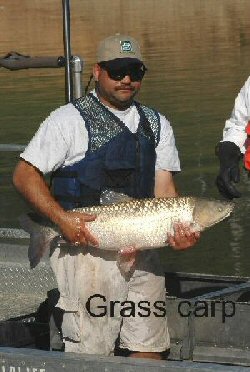
Texas Parks and Wildlife Department (TPWD) has collected several exotic species during non-routine sampling efforts or fish kills from urban bayous throughout the metropolitan area around Galveston Bay. Nile tilapia, (Oreochromis niloticus), blue tilapia (Oreochromis aureus), blackfin pacu (Colossoma macropomum), armored catfish (Loricarridae), Rio Grande cichlid (Cichlasoma cyanoguttatum), and grass carp (Ctenopharyngodon idella) have all been found. Local anglers have also reported redtail catfish (Phractocephalus hemioliopterus) in Clear Creek, Galveston County. With the exception of grass carp, all of the exotic species mentioned are commonly sold in aquarium stores or tropical fish aquaculture facilities.
As newcomers to an ecosystem, non-native finfish can often out-compete or displace native species
for available food sources, habitat and other resources, and introduce exotic parasites or diseases
to native fish populations. Cichlids (blue and Nile tilapia) have temperature and salinity
tolerances that allow them to compete with native freshwater sunfish and bass for food and habitat
and can also inhibit reproduction of native species.
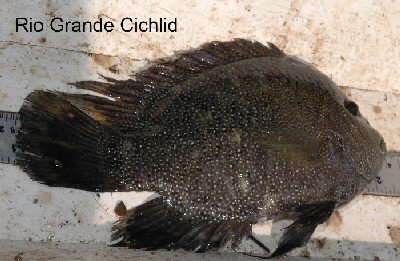 Rio Grande cichlids, though native to the
lower Texas coast, are now being found outside their historical range and can also compete with
sunfish for food and spawning habitat. Grass carp and goldfish feed on native vegetation and can
destroy valuable coastal marshes, which are important habitat for native finfish, shellfish and
waterfowl. Armored catfish are cavity spawners and burrow into the banks of waterways, causing
increased erosion while displacing native catfish. These catfish can also survive droughts or
cold water conditions for long periods of time in these shoreline burrows.
Rio Grande cichlids, though native to the
lower Texas coast, are now being found outside their historical range and can also compete with
sunfish for food and spawning habitat. Grass carp and goldfish feed on native vegetation and can
destroy valuable coastal marshes, which are important habitat for native finfish, shellfish and
waterfowl. Armored catfish are cavity spawners and burrow into the banks of waterways, causing
increased erosion while displacing native catfish. These catfish can also survive droughts or
cold water conditions for long periods of time in these shoreline burrows.
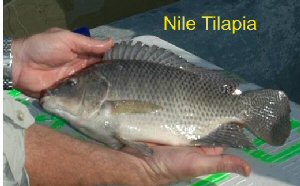
In order to determine the extent of exotic species in tidal bayous of Galveston Bay, TPWD staff recently conducted surveys to assess their diversity and abundance. TPWD used a variety of sampling gear in an attempt to capture these organisms between April 2004 and March 2005. Gill nets, fyke nets (a type of hoop net), fish traps and boat-mounted electrofishing equipment were used to sample three tidal bayous (Brays, Buffalo and Greens Bayous) on a quarterly basis.
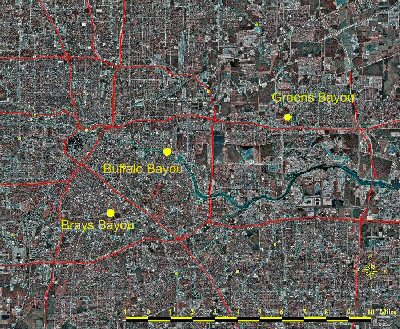
All fish captured were identified and measured in the field and exotic species were returned to the laboratory where additional measurements were taken. Reproductive status was evaluated to determine whether these species were spawning in the tidal bayous of Galveston Bay. Otoliths (ear bones) or dorsal spines were used to determine age of these species by counting growth rings similar to aging trees by counting tree rings. A small section of the dorsal fin was also collected for genetic analysis.
In addition to the forty-nine native fish species collected, six exotic species were also collected: snow king plecos (Pterygoplichthys anisitsi), grass carp, blue tilapia, Nile tilapia, Rio Grande cichlid and common goldfish. Most were in Brays and Buffalo Bayous. Spawning activities were evident in some species and the otolith and spine evaluations suggest these species have been residents of these bayous for many years.
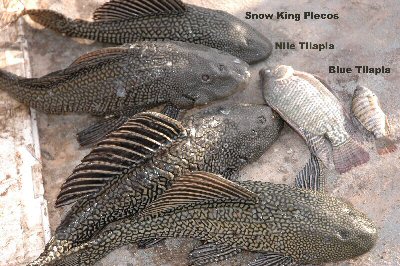
A few morphological features to look for in snow king plecos are their fleshy sucker like mouths, armored body plates and adipose fins (fleshy flap on their tails). Although Nile and blue tilapia were genetically determined to be hybrids in this study, Nile tilapia are distinguished by their vertical stripes throughout the caudal (tail) fin. Rio Grande cichlids are easily identified by white spots over their bodies and dark vertical bars. Grass carp have no barbels on their mouths and have short snouts.
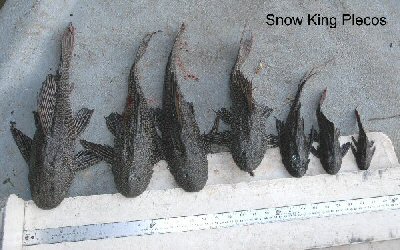
The Texas Fish Farming Act of 1989 provided the authority to regulate harmful and potentially harmful fishes, shellfishes and aquatic plants that pose the greatest threat to native species. TPWD currently maintains a list of these prohibited exotic species (http://www.tpwd.state.tx.us/huntwild/wild/species/exotic/) that may not be possessed, transported interstate or released into Texas waters without TPWD authorization or an Exotic Species Permit. Of the species collected during this study, only grass carp and blue tilapia are listed on the TPWD prohibited species list.
Currently, TPWD is developing an Aquatic Nuisance Species Management Plan for Texas, which is designed to address the prevention, control, and impacts of exotic species through management, research, and public education and focuses on unintentional, unauthorized introductions of nuisance exotic species. Efforts are underway to develop public awareness materials for distribution to markets that sell live seafood, and media outlets are being informed of issues related to exotic species introductions. For more information on impacts of invasive species in Galveston bay see: http://www.galvbaydata.org/projects/invasive/Invasive.html
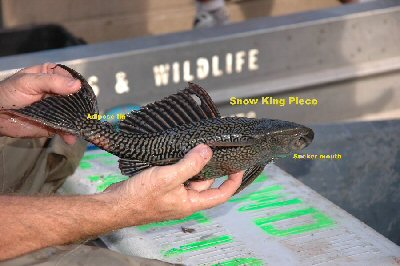
TPWD is also tracking the occurrence and range extension of exotic fish species captured in all bayous and bays. Anglers can reach Leslie Hartman at 361-972-6553 or Brenda Bowling at 361-972-6253 to report the location of any suspected exotic fish they catch. Anglers should also eviscerate or kill any exotic fish they catch, and not release the fish back into Texas waters.
© Copyright Texas Parks and Wildlife Department. No part of this work may be copied, reproduced, or translated in any form or medium without the prior written consent of Texas Parks Wildlife Department except where specifically noted. If you want to use these articles, see Site Policies